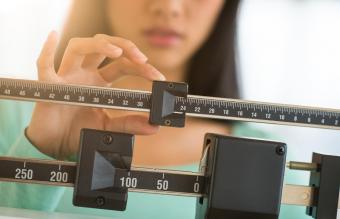
People turn to weight loss juice fasting for a number of reasons. While weight loss is often the prime motivator, dieters can derive a number of other benefits by following a healthy fast.
Juice Fasts Are Not Easy
One benefit for following a juice fast for weight loss is that there is no question as to what to eat. The first few days are probably the hardest as you learn to ignore cravings and break existing eating habits such as reaching for that chocolate if you are stressed. Juice fasts eliminate all cooked foods and animal products from your diet. This includes processed foods that contain white flour and refined sugar. Some juice fasts do allow a small amount of honey, which is considered an animal product in some circles. Plenty of juice fasting recipes are available in books and online.
Selecting a Juicer
To follow a juice fast, you'll need to purchase a quality juicer. A juicer is different than a blender. It's a machine designed to extract juice from fresh fruits and vegetables and removes most of the fiber from the juice. There are two types of juicers to choose from:
Centrifugal Juicers
Centrifugal juicers are the most commonly used juicers. They spin at high speeds as vegetables and fruit are inserted through a chute much like on a food processor. The spinning separates the juice from the fiber and discharges fresh juice into a bowl or receptacle.

Masticating Juicers
Some experts say that masticating juicers are best because they juice more efficiently and produce more juice. Instead of spinning like a centrifugal juicer, a masticating juicer grinds vegetables and fruits at low speeds to separate the juice from the fiber. Another benefit of using a masticating juicer is that they tend to be easier to clean than centrifugal juicers. Anything that reduces the amount of work it takes to follow a diet is a benefit. However, on the downside, masticating juicers tend to cost more than centrifugal juicers.
Losing Weight and Other Benefits
Losing weight is just one reason to follow a juice fast. Many people choose a juice fast as a natural way to detoxify the body as well as losing weight. The bottom line is that no matter what reason you choose to follow a juice fast, you'll experience the dramatic loss of stored body fat. In fact, the detox process is linked with the loss of stored fat because toxins are stored in the fat. Due to this fact, people who follow weight loss juice fasting will also go through detox and those who follow a juice fast to remove toxins will also lose weight.
Detox Symptoms
Another consideration when planning to follow a juice fast are the detox symptoms that may accompany the fast. They can be severe enough to take you out of commission for a few days. With that in mind, consider your schedule when starting a juice fast. Negative detox symptoms include:
- Aches and pains
- Acne or pimples
- Back pain
- Bad breath
- Body odor
- Changes in sleep/increased dreaming
- Coated tongue
- Constipation or diarrhea
- Dizziness
- Feeling cold
- Frequent urination
- Headache
- Intestinal discomfort
- Nausea
- Weakness
How Long Should You Fast?
A variety of juice fasts recommend different lengths of times to achieve results. How long you follow a juice fast will depend on you. The guideline is to stay on the diet for at least two days beyond the last day you experience detox symptoms. People who follow a juice fast to battle a health crisis often follow the fast for 3 days a week but eat normally the remaining 4 days, however a strict juice fast may last for several days to 3 weeks or longer. Here are some other options:
- Fast one day a week
- Fast 3-5 days a month
- Fast one week 4 times a year (a great way to bring in each season)
- One month once a year
Juice Fasting Is Not for Everyone
While a juice fasts are considered safe for most, it is not recommended for everyone. If you have any of the following conditions a juice fast is not safe:
- Type I diabetes
- Gout
- Metabolic Syndrome
- If you are pregnant or nursing
How to End Weight Loss Juice Fasting
If you follow a fresh juice fast for an extended period of time, it is important to ease back into eating solid foods. To do so, follow these steps:
- Drink tea and glass of vegetable juice for breakfast.
- Midmorning eat a small ripe apple.
- Drink tea and be sure to drink water.
- Evening meal: Steamed vegetables and baked potato.
Follow this diet for 1/3 of the days you fasted before returning to your normal diet.







